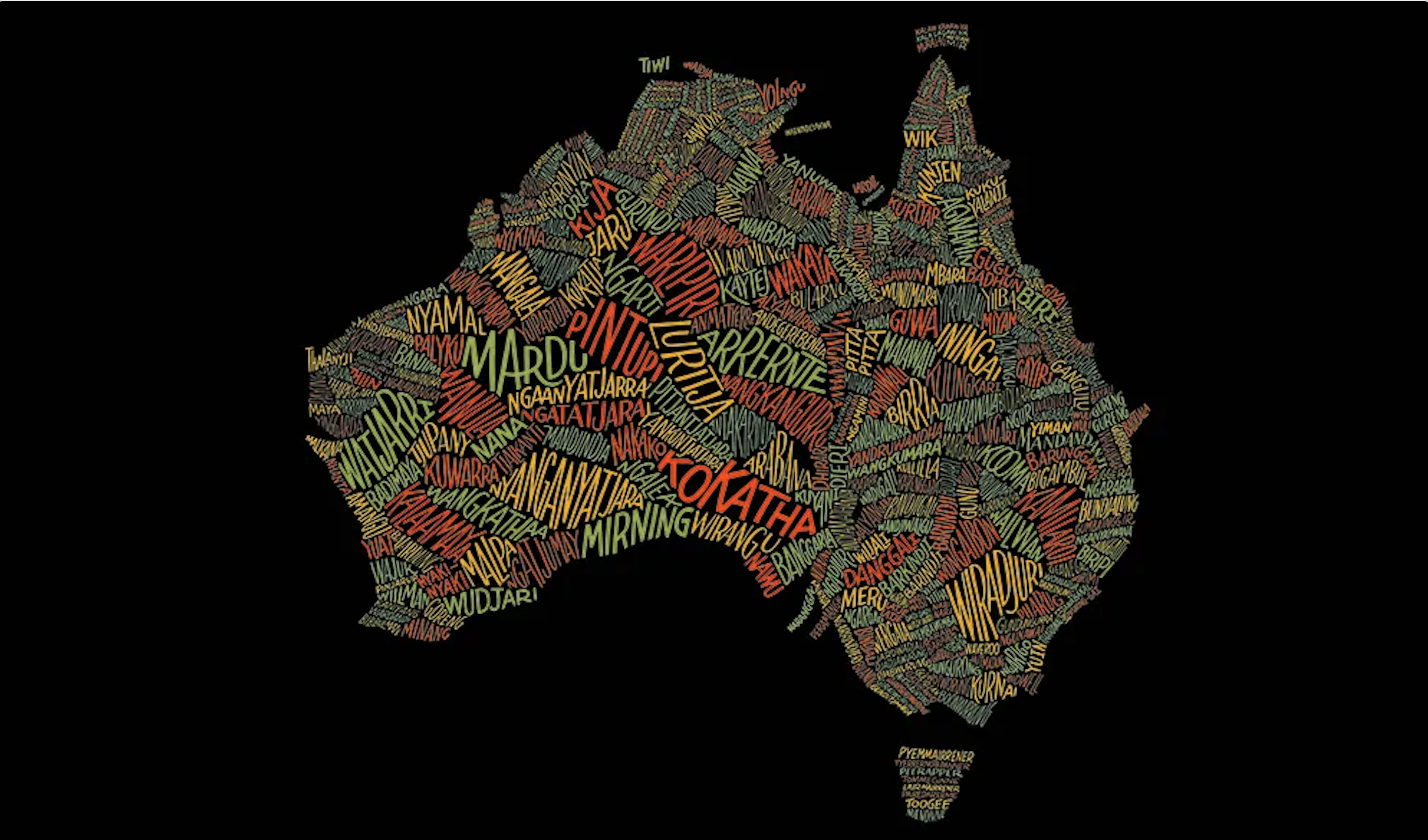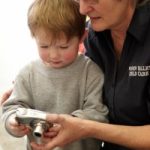 Image by David Foster. Courtesy of Australian Geographic, 2016.
Image by David Foster. Courtesy of Australian Geographic, 2016.
ECA recently had a conversation with two members of the ECA Reconciliation Action Group, Jo Goodwin and Adam Duncan, to talk about Australia Day and the ongoing work undertaken to help children and early childhood educators understand the many complexities around 26 January.
ECA: Jo and Adam, you both wrote blog pieces for ECA last year about acknowledging 26 January, and the importance of having conversations with children about some of the more challenging subjects. How do you feel these conversations can support the way we embed reconciliation within their everyday program?
Jo: The conversations help in the development of empathy and an understanding of the true history of Australia and what’s happened. It encourages curiosity and wanting to know more. These smaller conversations can lead to bigger ones about reconciliation.
Adam: An interesting point is, in so many ways, we usually work to teach children to be proud of their differences. That just because we’re different doesn’t mean we are wrong or bad. But, these kind of conversations can be sorely lacking when we talk about something like 26 January. I know it’s not an easy conversation, and unlike things like the Chinese New Year, which is a celebration, 26 January is not a celebration for everyone. But talking about Survival Day is vitally important, as it highlights a point of difference within our community. At the end of the day, it is ok that we all feel differently about the significance of the date. We just need to make sure that while having these conversations everyone’s voices are heard and everyone’s opinions are validated somehow.
ECA: Many educators ask what activities they can create to mark Australia Day? What is a good starting point to acknowledge 26 January in an early childhood context?
Jo: If you wanted to do something to mark the day, you could explore identity with children and places of belonging, and maybe do a reflective exercise around the heritage and ethnicity of all the children to reflect the diversity of their families and cultures. There are many books and websites available that can be used to support this conversation and develop children’s understanding about colonisation and support their learning and curiosity about the true history of 26 January.
Adam: At our service, we generally don’t do any specific programming around it, given we are closed on the day; much the same as we don’t talk much about any other public holiday. We just have broader conversations about things we see on the news.
There is a book, My Place by Nadia Wheatley, which I have always liked to use when we do talk to children about the day. The book looks at changes in the physical landscape, alongside the people that lived in those areas, and their attitudes. It has a mud-map drawing of an area of Australia and shows children growing up at different times in that area. For me, it is an excellent example of the changes that Australia has gone through from pre-colonial times to reasonably recently. It provides different perspectives, and where people come into the story is where their investment begins. Therefore, their attitudes might be different—which explains why certain days, like Survival Day, mean different things to different people.
Jo: There are other great books that educators can use. Somebody’s Land by Adam Goodes and Ellie Lang introduces children to Australia’s First Nations history and the term terra nullius. It’s an excellent book to explore on 26 January. It provides a provocation to start a conversation with children and hopefully their families. Day Break by Amy McQuire is another excellent book about 26 January. It is a multi-generational conversation between a child, parent and grandparent making their way back to Country. Both these books support truth-telling conversations with children about 26 January.
ECA: What resources and professional development opportunities would you recommend to educators to help them develop a deeper understanding of the complexities of the day?
Adam: I would suggest educators go to any community events run by their local Indigenous community—that they have access to.
Jo: Educators can explore online events and use those as a professional learning opportunity, particularly any events in their local community. It is the 20th anniversary of Yabun this year, which will also be online. They could also think about the importance of understanding the true history of colonisation and its ongoing impact. If educators haven’t undertaken cross-cultural awareness training, Kanyini is a really great documentary by Uncle Bob Randall and is a great starting point. I would also recommend Jade Kennedy’s Ted Talk, Welcome to Country.
ECA: One of the other things you both mentioned in your blog posts was using empathy and compassion as an opportunity in your conversations about 26 January with children. How do you think this can be fostered?
Jo: Great question. The Australia Day conversation is a big one for children and relevant for helping them develop empathy and compassion. You can break it down by thinking about it in terms of having safe conversations so as to not traumatise them. Consider what you would like the outcome to be for the children and their families prior to engaging in the conversations. Also reflect on how confident and knowledgeable you are to facilitate these conversations. If your confidence level is not high, continue to educate yourself. You need to be safe; you need to know your children and their individual needs and the context of their families. You can’t say things like, ‘Imagine if you were taken away one night and woke up in another bed’. That is just too much for a young child. You can break it down by having conversations about what is happening for them at the service; for example, ‘On the days you are sad, what makes you unhappy?’ It needs to be contextually and developmentally appropriate for each child. It is about connecting them with that feeling. It’s also about understanding the concept of diversity and the diverse ways in which we live, express and understand ourselves, and that sense of self.
Adam: Listening to Jo, the thing that’s come to my mind is, I think there can be a tendency for an all-or-nothing attitude to teaching about Indigenous issues. There is also a tendency, from my experience, for a desire of truth-telling and being as true to the experiences of Indigenous community as we can be; we can be a little bit hard in our teaching of the realities of colonisation. To best teach compassion and empathy, we need to be compassionate and empathetic. We need to enact those qualities within our teaching to effectively promote those qualities in children. And, we need to do this by asking ourselves how we can explicitly teach children about Survival Day. How do we teach them about the boats that landed, in a way that doesn’t position them as the antagonist in the story? We do that by being empathetic to their situation and to the fact that they are children. We need to be compassionate to their life experiences and their families.











Thank you for opening up this conversation and reminding us of the importance of having the conversation. Starting small, learning about the hidden histories of our First Nations Peoples ourselves and delving deep into rich, cultural journeys with children, families and our communities is work we can and should do towards reconciliation. Thank you for the resource ideas Jo and Adam. Our children cherish the morning Acknowledgment to ritual at kindy each day. Many constantly represent their understanding through painting, drawing, through loose part creations and garden inquiries, telling us that cultural learning is important to them and they feel it in their hearts. These connections lead us into further learning and tougher conversations with our families, redressing racism. Two of our team attended Embedding cultural connections last year, Ed Dept Qld. The 6 keys framework is a great tool!
Always was, always will be Aboriginal land.
Linda
Thank you for your insight it is a really lovely and respectful way of looking at the situation through the eyes of all of us. It is through having compassion and empathy for others stories and truths that will bring us together. It is also reassuring that it is normal to feel some discomfort about how to approach or deal with conversations with young children about the 26/01 and that this day means different things to each of us. It is through being compassionate, empathetic, to each and everyone’s life experiences that will assist us to all walk together and to become comfortable with our past. I know I will do my best to do my part.